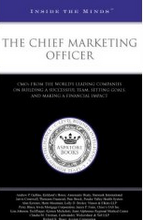 Are you personally seeking higher visibility in your field or profession?
Are you personally seeking higher visibility in your field or profession?If you answered yes, you’re not alone. More and more of us are aiming to be widely recognized. But this growing trend presents issues for employees and companies to consider.
It used to be that the desire for high visibility was largely confined to stars in the worlds of movies, sports and politics. But in our web-enabled world, those tools have been democratized, and the high visibility trade is now widely practiced. Capitalizing on the advice of folks like Tom Peters, individuals in business and the professions now build “the brand called you.”
In their book High Visibility: Transforming Your Personal and Professional Brand, Philip Kotler, Irving Rein, Michael Hamlin and Martin Stoller argue that high visibility marketing and communication has become a sophisticated industry that reaches deep into the economy. The book, which was originally written in 1997 and was re-released (and re-written) in 2006, provides a framework for understanding the drivers and enablers of visibility. The authors contend that “attaining visibility has become a highly sophisticated process” and “all kinds of people today are seeking ways to become brands.”
So why are more people seeking high visibility?
One reason is that higher visibility often translates into more money. Those who are better recognized command higher fees and salaries and other perks.
Another reason is attention. Those who are well branded in the marketplace attract more prospects (or prospective employers).
A third is trust. One won’t be widely viewed as a provider of trustworthy guidance unless one has already been elevated to a certain level of public recognition and esteem.
Finally, there is status. Tom Wolfe argues that economic expansion after World War II fostered the emergence of new “status spheres,” and encouraged status competition.
For all these reasons organizations are attracted to high visibility individuals. Corporations have paid enormous sums to attract recognized CEOs with impressive track records. Universities seek respected names as their leaders. Newly elected presidents want a certain amount of star power in their cabinets.
But there are downsides. As with Hollywood stars, high visibility can make a career, or break it. It can lift an enterprise or hamstring it. Companies that have sought “rock star” CEOs have often ended up disappointed with the results. Jim Collins, author of Good to Great, points to HP’s transitional struggle with Carla Fiorina and wonders how well Apple will perform over the longer term without Steve Jobs or Oracle without Larry Ellison or Cisco without John Chambers.
“We learned in our research that the most effective leaders never make themselves the center of attention,” wrote Collins in a Wall Street Journal editorial in 2001. “They are understated yet determined, quiet yet forceful. Most lack the liability of charisma. Indeed, the very best ones overwhelmed us not with their ego, but with their humility. They’re ambitious, to be sure, but ambitious first and foremost for their institutions, not for themselves.”
So in this new world where more rank-and-file employees are seeking to increase their personal visibility, how do you balance what’s best for the individual as “visibility aspirant” with what’s best for the enterprise as thought leader and brand? This is an increasingly important question to in today’s highly contested, trust-starved and turbulent markets.
Let me argue that as organizations seek to turn more employees into “thought leaders” in order to boost their reputation and build brand trust; they need to articulate a specific and strategically well thought out set of rules for the road. Also companies should not invest all of their visibility producing resources into just one or a few individuals. Things change. People move on. Risks may outweigh benefits when you invest all your visibility capital into one basket.
It’s better to cultivate multiple thought leaders within an organization and raise their visibility collectively. It’s also important to raise the visibility of the organization itself as a source of trustworthy and authoritative guidance.
For individuals, the visibility premium has powerful allure and can be lucrative. But will you take the necessary steps to earn this premium and build trust with your audiences? Or will your fans end up wishing upon a falling star?
Britton Manasco is a contributing "trustmeister" to the Reputation Garage and founder of Manasco Marketing Partners, a firm that specialized in thought leadership strategy and execution. He also produces the blog, Illuminating the Future: How Thought Leaders Become Market Leaders.
Copyright 2008 by the Reputation Garage







No comments:
Post a Comment